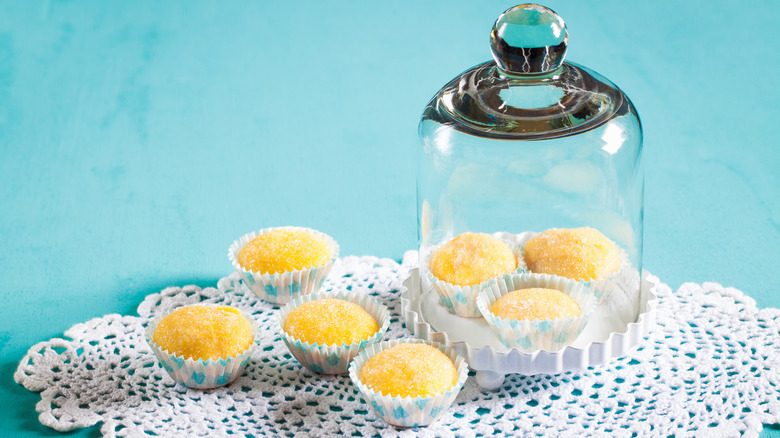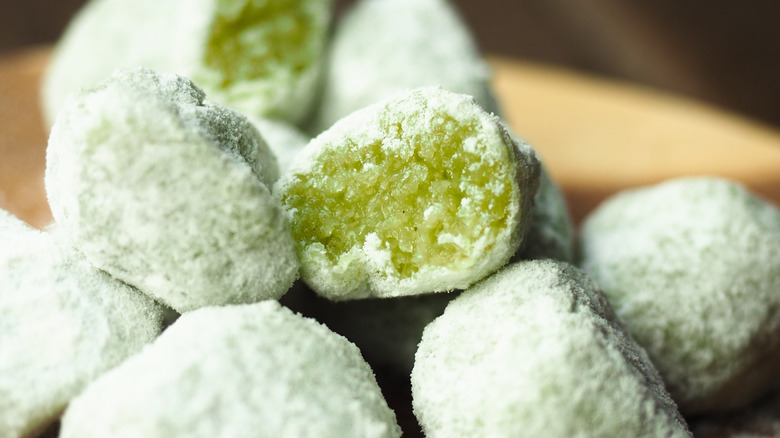The Murky Origins Of Yema, A Popular Milk Candy In The Philippines
In the age of mass-produced candy, there is a certain satisfaction to cooking your own confectionary delights, and no shortage of recipes from around the world to choose from. One such sweet is yema, a delightful Filipino egg and custard dish that can be customized to your liking, with one particularly delicious variation being as a pandan milk candy. But while the cooking process for yema is relatively simple, its history is trickier to parse.
Both Spain and the Philippines claim yema as their own, but one fact on which the two countries agree is that the dish's origin in the Philippines began during the colonial era when the Spanish began using egg whites as a coloring agent for churches, parishes, and mansions, leaving a large number of egg yolks behind. Soon, yolks were mixed with sugar and turned into yellow, creamy candies.
This story appears to be uncontested, but that doesn't mean that's where it began. The Spanish claim to yemas dates back to the year 1500, according to the nuns of Avila whose predecessors used egg whites to starch laundry and then gave the yolks to monks to cook into a dough with lemon juice and syrup, in a similar fashion as the Filipino counterparts that came decades later. It's also posited that the Moorish presence introduced the region to their custom of making sweets from egg and sugar. To this day, Yemas de Santa Teresa are a popular Spanish dessert around religious holidays.
How to make pandan yema
While the traditional yema — which is made from egg yolk, simple syrup or sweetened condensed milk, and either lemon or lime peel — may have debated origins, to make a version that is undeniably Filipino, try adding pandan and substituting calamansi zest for the typical citrus. For those unfamiliar, pandan is a Southeast Asian plant with a slightly sweet, nutty taste that is used for flavor and color in a variety of recipes, whether added to rice in Singaporean street food, used in unusual craft cocktails, or, most commonly, in a variety of sweets. Calamansi, also a uniquely Southeast Asian ingredient, is a small, tart lime hybrid that boasts a surprisingly sweet peel.
This twist on yema can also be made with or without dairy by choosing either regular or coconut condensed milk. Combine your condensed milk with egg yolks, pandan powder, and calamansi zest over low heat. Once it's thick and creamy, it's to cool it to room temperature, and then chill it until it sets and hardens in the fridge. Finally, roll the resulting mixture into small balls. Roll in more pandan powder or your preferred garnish. While serving this dish may lead to some arguments about gastronomical history, there will be no debate about its deliciousness.


